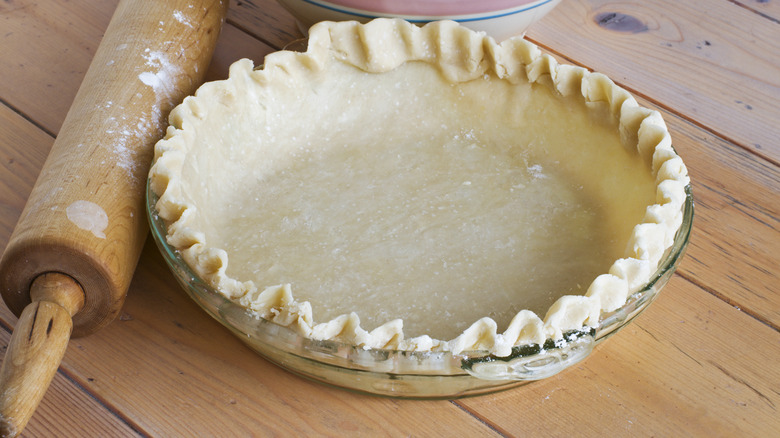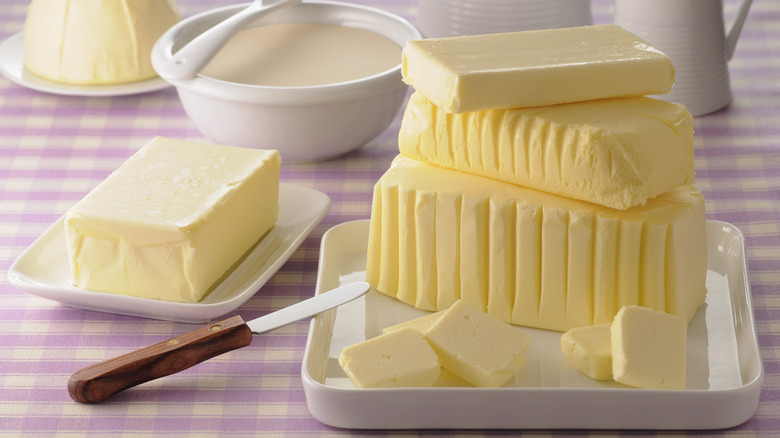Butter Vs Shortening: Which Makes A Flakier Pie Crust?
Pies are the perfect dessert for almost any occasion. With a nearly endless array of flavors and fillings you can create them with, they are incredibly versatile and offer a little something for everyone. While pie crusts are made with fairly basic ingredients, they are also notoriously tricky to make. Despite Serious Eats' explanation that most recipes really only include four or five ingredients (flour, ice water, salt, optional sugar, and some form of fat), getting these ingredients balanced correctly can be quite a challenge. As Food 52 notes, the popularity of different fats used for pie doughs has changed over the years, with lard being a classic choice before it was overtaken by shortening as the pastry fat of choice in the 1950s and 1960s, which in turn has since been more commonly substituted for butter or vegetable oils.
There are pros and cons noted for each method of making pie crust, including flavor, stability, and ease of mixing and handling. But when it comes down to a battle of the flaky pastries, one option always seems to come out on top.
Butter is best
When it comes to flavor and fluffiness, numerous taste tests all say butter is the superior fat for your homemade pie crust. According to Taste of Home, the same recipe made with lard, shortening, and butter and submitted for blind taste tests far and away was carried by butter, with lard coming in a distant second. It was determined that shortening was the least flavorful option and created the crumbliest dough, which is daunting if you're planning on filling your pie with a heaping pile of syrup-covered fruit. King Arthur Baking explains that this extra fluffiness is because butter contains a higher content of water, which, while in the oven, evaporates between the layers of dough and causes it to puff up more, creating the light, fluffy texture so many people are looking for in their pie crust. This does come with the one side effect of making defined edges less sharp, so if you are working on a design on your crust, a combination of butter and shortening may be a better choice.
The one disadvantage butter has is it melts at a lower temperature than lard or shortening, so the heat from your hands or the kitchen on a busy baking day can cause it to start to melt while you work the dough. Food 52 recommends avoiding this pitfall by popping it in the freezer before you cook, which makes the process a little more tricky but worth the effort.

